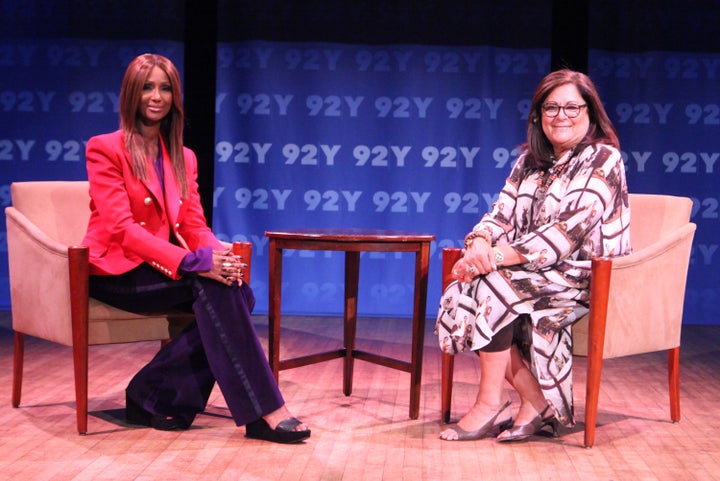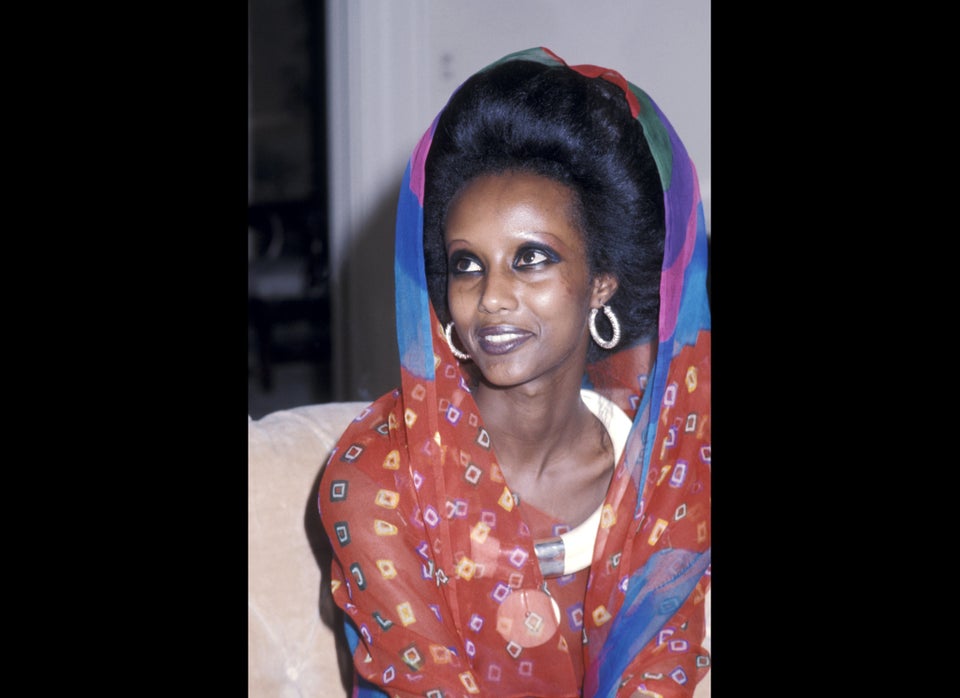Supermodel icon Iman took the stage at the 92nd Street Y on Tuesday for "Fashion Icons," a 90-minute moderated interview where virtually no topic is off limits. The 60-year-old became especially candid when discussing racially insensitive comments made early in her illustrious career.
One editorial comment that really upset Iman, she told New York Fashion Week creator Fern Mallis, was made in a 1976 Essence magazine piece when Marcia Gillespie, the magazine's editor-in-chief at the time, described Iman as "a white woman dipped in chocolate." Coming from a premiere African-American publication, the comparison was particularly problematic because it declared that Iman's physical features don't reflect those of a black woman.

Iman revealed that she first learned about the quote when asked about it by a Time magazine writer. "I'm a very political person and I think things through clearly, even when I was 18 years old," she said. "And I definitely did not want to talk to this white [Time] journalist about a war with me and a black magazine. I was going to bring the war to [Gillespie]."
Iman said she addressed Gillespie personally, telling her, "'Probably, I'm more black than any black person in America.' I mean I don't have any white in me. I'm pure Somali," Iman explained. "So to me, I took offense to that. I don't look like a white woman. I look Somali."
Black women come in all different shapes, sizes and colors, of course, but those the media consider "delicate," "ambiguous" or "exotic" have always received the most attention. It's still happening today with the Chanel Imans and Joan Smalls of the fashion world. Like the pioneering black supermodels before them (including Iman, Pat Cleveland and Beverly Johnson), Smalls and Chanel Iman are also considered beauties who don't resemble stereotypical black women. Most recently, Oscar-winning actress Lupita Nyong'o was labeled the "new face of beauty" by Harper's Bazaar UK. While the magazine may have no malicious intent behind this recognition, it proved that a limited ideal of black beauty still persists.
While Iman was feeling the heat from African-American critics, she noted that "the white side was saying, 'Oh, you're different. You're better than everybody else." However, she could see right through those left-handed compliments. "If I didn't know the nuances of the politics of beauty and how you can use it by separating people and humiliating people... that constant friction was not lost on me," she said.
Iman told Mallis that she entered the industry as "a fully-formed black woman," and that's how she was able to navigate through negative stereotypes in fashion. But some 40 years later, not much progress has been made -- young black models are still speaking out on racism in the industry.
South Sudanese stunner Nykhor Paul wrote a raw open letter on Instagram in July where she called out makeup artists and "white people in the fashion world" for not being trained or prepared to work with models like herself with darker complexions. Meanwhile, British supermodel Jourdan Dunn continues to vocalize her true feelings on what it's like being "the only black girl booked for a show."
Speaking up and out is the best thing young black models can do, Iman believes.
"Remember you have a voice," she said. "It's like the subway signs... if you see something, say something."
Also on HuffPost:
